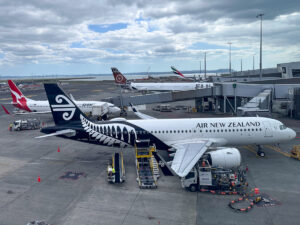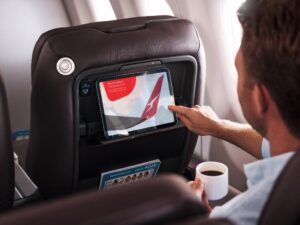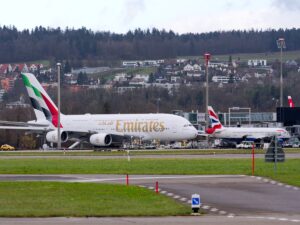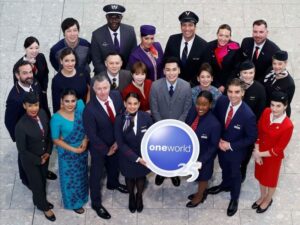
In our new “From the AFF Archives” series, we’ve opened up the Australian Frequent Flyer Gazette archives to bring you a selection of historical articles, news items and “travel tips” dating back to the very first Gazette in 2000!
The following article, “OzJet Collapses”, was originally featured in the April 2006 edition of the Frequent Flyer Gazette.
OzJet was a short-lived airline that began operating domestic flights in Australia in November 2005. It was an all-Business Class airline that operated a small fleet of ancient Boeing 737s. These were fitted out with leather recliner seats in a 2-2 configuration.
The airline hoped to attract business travellers on routes like Sydney-Melbourne with its comfortable seats and generous 20kg carry-on baggage allowance, at fares similar to Qantas flexible economy ticket prices. But it didn’t have a frequent flyer program – something that business travellers value – and was late to start opening airport lounges. It also launched at a time when most businesspeople weren’t flying.
An AFF member flew with OzJet on its very first day of operations. You can still read Mal‘s OzJet trip report on the AFF forum!
This article was originally published in the Australian Frequent Flyer Gazette in April 2006.
OzJet Collapse
OzJet made Australian aviation history this month when it unceremoniously collapsed after just three months in operation. That’s the shortest life span for an Australian airline ever! Following in the footsteps of Compass Airlines that lasted only a year, OzJet has returned the state of Australia’s aviation industry into a duopoly once again.
It seems in the current market climate, to not have a Frequent Flyer program is to die. Owner, Paul Stoddart said the absence of a loyalty program was a major factor in the demise of OzJet. The focus on a niche market of business people, many of whom are vehemently loyal to Qantas was another prime factor leading to its demise.
It seems the offer of business class service at full economy prices did not have the requisite pulling power to attract customers. Some business analysts feel OzJet was immediately at a disadvantage; pitting eight return services a day against half-hourly peak departures by Qantas and Virgin. The rigid schedule did not give business passengers the chance of putting flights back if meetings ran late.
Furthermore OzJet entered the market in late November 2005, undoubtedly the quietest time of the year for business travel. They entered the market with no strong marketing campaign (no Magda!) and their 30-year-old 737 200s dulled in comparison to planes flown by Qantas and Virgin Blue.
The airline was losing Stoddart up to one million dollars per week and he has reportedly lost an eight-figure sum on the venture. It seems his pockets weren’t deep enough and his passion wasn’t strong enough. Stoddart admitted last month to spending more time on his Formula One racing team rather than the airline. The airline is set to move into a new charter role with just two aircraft, leaving 70 of the 100 staff jobless. It seems Virgin and Qantas are set to dominate the Australian market for the time being.
Read what our members think HERE. (Note: This AFF thread is still available to view but is locked for new comments as it’s from 2006.)
Want travel tips that are relevant in 2023?
A lot has changed since this article was written, but the Australian Frequent Flyer Gazette still contains timely travel news, advice and tips! Subscribe to get the latest edition in your email inbox for free each Monday and Thursday.
You can leave a comment on this and other archive content in our AFF Gazette archive discussion thread. Or, if you have another question about travel or loyalty programs in 2023, please feel free to post it elsewhere on the Australian Frequent Flyer forum!













































































